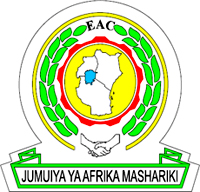
In order to promote public education and public safety, equal justice for all, a better informed citizenry, the rule of law, world trade and world peace, this legal document is hereby made available on a noncommercial basis, as it is the right of all humans to know and speak the laws that govern them.

EAS 69:2006
ICS 67.100
EAST AFRICAN COMMUNITY
© EAC 2006
First Edition 2006
iiiDevelopment of the East African Standards has been necessitated by the need for harmonizing requirements governing quality of products and services in the East African Community. It is envisaged that through harmonized standardization, trade barriers that are encountered when goods and services are exchanged within the Community will be removed.
In order to achieve this objective, the Community established an East African Standards Committee mandated to develop and issue East African Standards.
The Committee is composed of representatives of the National Standards Bodies in Partner States, together with the representatives from the private sectors and consumer organizations. Draft East African Standards are circulated to stakeholders through the National Standards Bodies in the Partner States. The comments received are discussed and incorporated before finalization of standards, in accordance with the procedures of the Community.
East African Standards are subject to review, to keep pace with technological advances. Users of the East African Standards are therefore expected to ensure that they always have the latest versions of the standards they are implementing.
© East African Community 2006 – All rights reserved*
East African Community
P.O. Box 1096
Arusha
Tanzania
Tel: 255 27 2504253/8
Fax: 255 27 2504255
E-mail: eac@eachq.org
Web: www.eachq.org
* © 2006 EAC — All rights of exploitation of any form and by any means reserved worldwide for EAC Partner States’ NSBs
ivPasteurized milk — Specification
This East African Standard specifies requirements and methods of sampling for pasteurised liquid milk offered for sale and intended for human consumption.
The following standards contain provisions, which, through reference in this text constitute provisions of this standard. All standards are subject to revision and parties to agreements based on this standard are encouraged to take steps to ensure the use of the most recent editions of the standard indicated below. Information on currently valid national and international standards may be obtained from the Partner States Bureaux of Standards Information and Documentation Centre.
CAC/RCP 57, Code of hygienic practice for milk and milk products
EAS 38, Labelling of pre-packaged foods
EAS 68, Milk and milk products — Methods of microbiological examination
EAS 160:2000, Milk and dried milk, butter milk, and butter milk powder, whey and whey powder — Determination of phosphatase activity — Specification
EAS 162:2000, Milk, cream and evaporated milk — Determination of total solids content (reference method)
EAS 164:2000, Milk — Determination of fat content (Routine method)
EAS 165:2000, Milk and milk products — Inspecting sampling — Inspection by variables
For the purpose of this East African Standard the following definitions shall apply:
normal, clean and fresh secretions extracted from the udder of a healthy milking cow, properly fed and kept, but excluding that got during the first seven days after calving
1heat treatment process applied to a product with the object of eliminating possible health hazards arising from pathogenic micro-organisms associated with milk which is consistent with minimal chemical, physical and organoleptic changes in the milk
milk which has been subjected to pasteurization
Milk shall be pasteurised using any of the following methods.
Milk shall not contain added water. The freezing point depression of milk shall not be more than 0.550 °C and shall on no account be less than −0.525 °C when tested in accordance with EAS 163.
Milk shall not contain any preservatives or other added substances.
Pasteurized milk shall also comply with chemical requirements in Table 1.
| Product | Milk fat % | Milk solids not fat % (min.) | Methods of Test |
|---|---|---|---|
| Whole milk | 3.25 min | 8.5 | |
| Fat reduced milk | 2.25 min | 8.5 | |
| Low fat milk | 1.5 max | 8.5 | |
| Fat-free milk | 0.5 max | 8.5 |
The density of milk measured at 20 °C shall be not less than 1.028 g/mL and not more than 1.036 g/mL.
Pasteurised milk shall give a negative phosphatase test immediately after heat treatment when tested according to EAS 160.
2The products covered by this Standard shall comply with the maximum limits established by the Codex Alimentarius Commission
The products covered by this Standard shall comply with the maximum residue limits established by the Codex Alimentarius Commission.
The microbiological limits for pasteurised milk shall be as indicated in Table 2 below.
| Micro-organism | Maximum level | Method of test |
|---|---|---|
| Total plate count, per mL | 30 000 | EAS 68-1 |
| Coliforms, per mL | 10 | EAS 68-2 |
| Escherichia coli per mL | Absent | ISO 11866 |
| Mycobacterium tuberculosis, per mL | Absent | EAS 68 |
Milk shall be produced, processed and handled in accordance with CAC/RCP 57.
Pasteurized liquid milk shall be packaged in safe, food grade, and commercially sanitized dry containers. The containers may be made of glass, approved metals, suitable plastics or suitable treated paper. The product when marketed shall be packaged in well-sealed containers in order to prevent spoilage or contamination of the product.
The containers shall be labelled in accordance with the requirements of EAS 38. In addition, the following particulars shall be legibly and indelibly labelled on the container:
The fill of the container shall be in accordance with the respective regulations of Weights and Measures. The milk shall occupy not less than 90 % v/v of the water capacity of the container. The water capacity of the container is the volume of distilled water at 20 °C, which the sealed container will hold when completely filled.
4